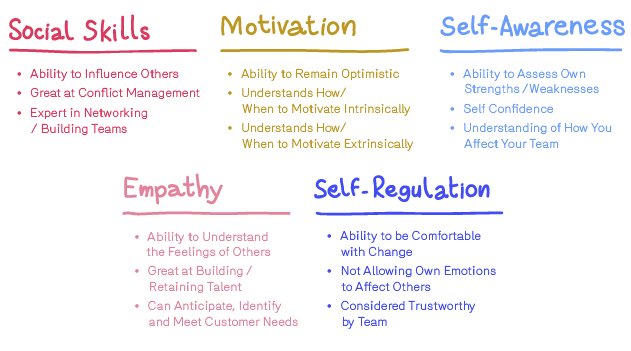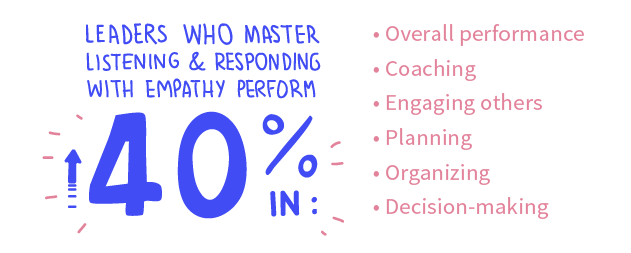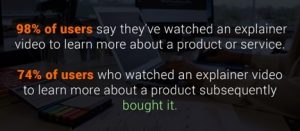— May 2, 2018

Every manager at some point in their career finds themselves faced with an underperforming employee. Addressing poor work performance can be difficult, uncomfortable, and even downright awkward. The good news? When it comes to dealing with this issue, some basic planning and a little bit of heart can go a lot farther than you might think.
While several definitions exist for what constitutes a “poorly performing employee”, the truth is that its meaning can vary across companies, industries, and individuals.
At its core, however, it refers to someone who isn’t pulling their weight as part of a team. This could mean a person who isn’t meeting their quotas, is missing deadlines for deliverables, is constantly absent or late, or isn’t operating within a certain standard of behavior.
In other words, as a manager, it shouldn’t take long for these individuals to pop up on your radar.
But once they do – then what? And could these problems have possibly been avoided in the first place?
For decades, dealing with poor work performance was traditionally reserved for the dreaded all-encompassing annual performance review. But with more and more of the world’s leading organizations sunsetting that standard in favor of a more people-friendly take, it’s critical that teams begin redefining their approach to underperformance from the ground up.
Addressing poor performance with an employee is simultaneously one of the most delicate and impactful conversations you’re likely to have as a manager. So naturally, it’s also the perfect time to put your Emotional Intelligence (EQ) to work for you.

Today we’ll turn our EQ lens towards Empathy and specifically how cultivating it – along with a few clearly defined strategies – can be the key to turning common performance issues into opportunities to build stronger bonds within your group.
Common Causes of Poor Employee Performance
As we often point out, the best leaders are the ones who know that success in their role stems directly from how well they manage, balance, and nurture their workplace relationships.
It’s not just a matter of understanding the nature of the people on their team, but understanding human nature itself. When an employee underperforms on the job, the cause can generally be attributed to two main factors:
-
- Lack of Ability – This can include everything from not having the resources they need to deliver what’s expected of them, to not having the knowledge-base or skill-set necessary to excel in their role.
- Lack of Motivation – This can include everything from not getting enough recognition for the hard work they’ve put it, to feeling there are no consequences for doing a subpar job, to burnout after a particularly stressful period.
While the majority of performance issues may, in fact, fall into these buckets, it’s also worth acknowledging a third, and frequently overlooked cause
- Personal Matters – Work is only one part of our lives. While some employees are able to compartmentalize external hardships and operate normally in the workplace, others can’t help but wear their hearts on their sleeves. Relationship troubles, complications with personal or family health, and financial difficulties are all examples of elements that can derail even the most motivated and skilled member of your team.
Thankfully, there’s generally always a fair and human way to handle these issues. The first step just needs to be taken in the other person’s shoes.
Performance Management: Why Empathy is More Effective Than Punishment
Whether you’re dealing with issues of Ability, Motivation, or Personal Matters on your team, your natural response might be frustration or annoyance. Those emotions may even be justified depending on the situation. Unfortunately, according to the Harvard Business Review, they’re also likely to work against you in the end.
“…when as a leader you express negative emotions like anger, your employees actually view you as less effective. Conversely, being likable and projecting warmth – not toughness – gives leaders a distinct advantage…”
Unless you’re dealing with a truly toxic employee, it’s worth remembering that the majority of us just want to leave work at the end of the day feeling as though we’ve accomplished something of value. Sometimes we just need a little help navigating the obstacles to get there.
It often makes all the difference to take a moment to step back, regulate your own emotions, and come at the situation from a place of compassion and curiosity. This is best achieved through empathy.
As Daniel Goleman outlines in his article The Focused Leader, there are three distinct types of empathy that apply specifically to leadership.

Leaders with high cognitive empathy can use their curiosity and understanding of another’s point of view to explain themselves and get ideas across in meaningful ways. This is useful for getting the best performance out of team members.

This is especially important for effective mentoring, and reading group dynamics. Not only do you understand the other person’s pain, but you relate to it, and in turn, feel it yourself.

While this relates closely to emotional empathy, it takes things a step beyond, allowing you to sense not just what people feel, but what they need from you. And as you might have guessed, this is what most people look for from their leader.
PRO TIP: Find the balance! Your goal should be to show compassion through emotional empathy, but then take a step back and shift to empathic concern, allowing yourself a clear-headed approach to solving the problem. Example – While addressing a team member’s slide in performance, they confide in you that they’ve recently been dealing with an ailing parent and are struggling to keep up with demands at both work and home.
Before finding a solution, take the time to connect. Relating a similar experience you may have lived through can go a long way, but simply listening and appreciating their situation can be just as meaningful. However, it can also be easy to become overwhelmed by the emotions present.
This is your moment to step back, worry less about feeling what they feel, and try instead to understand what they need. Something as simple as working one day a week from home could make all difference in helping them regain control over their time and responsibilities.
Employees dealing with performance issues aren’t always in the best space professionally or personally. Therefore, it’s in these tough moments where it’s critical to recognize that how you choose to approach the situation could represent a turning point in your relationship with that employee.
If, for example, the team member is struggling with a lack of ability in the job, they may feel embarrassed, afraid to ask for help, or like they’re biding time waiting for the inevitable hammer to drop. Truly making the effort to listen, empathize, alleviate stress, and work to help better their situation through additional coaching, training, or resources, is the best way to show compassion.
In an interview, Stanford University neurosurgeon Dr. James Doty, relates the story of his first experience assisting in the operating room. With his nerves in full swing, a drop of sweat fell from Doty’s brow and into the operating site, contaminating it. Even though the situation was in no way life threatening for the patient and easily resolved, the operating surgeon immediately became so angry that he kicked Doty out of the room on the spot, devastating him. As Doty explains:
“If the surgeon, instead of raging, had said something like: ‘Listen young man […] you contaminated the field. I know you’re nervous. You can’t be nervous if you want to be a surgeon. Why don’t you go outside and take a few minutes to collect yourself? Readjust your cap in such a way that the sweat doesn’t pour down your face. Then come back and I’ll show you something.’ Well, then he would have been my hero forever.”
Compassion translates to trust, and trust to loyalty in a way that, statistically, even a bigger paycheck isn’t able to compete with. Responding with anger and frustration in the majority of cases will erode that trust and could lose you an employee’s loyalty for good moving forward.
Still need convincing?
In a 2016 study by Development Dimensions International (DDI) that focused on the behaviors and results of over 15,000 leaders worldwide, empathy was determined to be the #1 leadership skill for overall success.

While it might not feel like it, empathy can absolutely be learned and improved. If you’re looking to sharpen this skill yourself and build on the information in this article, sign up for our free Emotional Intelligence Email Course, right here. Designed by experts, each of the five lessons covers a different domain, how you can apply it in your day-to-day, and provides guides, templates, additional resources & exercises that you can start putting to use immediately.
How to Plan Against Poor Performance
When considering an underachieving employee, it’s wise to start by asking yourself a few basic questions.
- Is this person experiencing role overload?
- Unclear objectives or responsibilities?
- Are they struggling to meet unrealistic targets?
- Might their expectations surrounding the role differ from yours?
- When is the last time you sat down together to discuss their performance and goals?
Poor employee performance can often be attributed to poor employee development or role planning. With the workforce beginning to move away from reactive, annual performance reviews, many common underperformance issues can often be ironed out by simply starting with a clear outline.
Instead of a blanket performance appraisal at the end of the year, make the feedback more actionable and meaningful by spreading it out over the course of your monthly one-on-ones.
Define Employee Responsibilities and Expectations
One of the best gifts that you can give employees on your team is a clear path forward. It shouldn’t just be your goal as a manager to help them meet their objectives, but also to develop them as individuals in meaningful ways.
Our approach here at Officevibe, is as follows: When a new employee joins the team, we take time in advance to outline 5-8 key responsibilities for their role, as well as the level of expectation, ranging from “beginner” to “expert”, for each responsibility depending on what we know about the person’s capabilities and skill set.
We then meet with the employee to walk through it together.
PRO TIP: When taking this approach, make sure not to exceed a max of 8 key responsibilities! While it might seem like it makes sense to include more, your goal in providing this outline is clarity for the employee. Too many key responsibilities can dilute that clarity and result in a lack of direction and focus for your new hire.
This exercise is less about dictating what this person will do, and more about having an honest dialogue to ensure both of your expectations are aligned when it comes to the exact definition of their responsibilities and deliverables.
This is a great time to make note of areas where the employee seems unsure. Openly discuss these perceived challenges and plan to focus your coaching and check-ins there over the coming months. You can also use this as an opportunity to learn about your employee’s personal goals and ambitions.
How would they like to progress in their career? Are there jobs/tasks that they’re interested in learning or growing into? Take it all into account tweak their Responsibilities and Expectations document as needed.
This is the perfect place to use cognitive empathy as you begin to understand what makes them tick.

Agree together on a plan that will let them meet company objectives while helping them develop a roadmap for achieving their personal goals within the organization at the same time. This is a great way to earn trust and buy-in from the outset, while helping them feel pride in their strengths, and supported in their weaknesses right from the start – all while giving you, their manager, a better idea of what to expect.
In other words:
“Train people well enough that they can leave, treat them well enough so they don’t want to.” – Richard Branson
Despite your best efforts, performance issues are likely to still crop up from time to time. Luckily, monthly One-On-Ones are the ideal place to deal with them.
5 Tactics for Discussing Poor Performance in One-on-Ones
Whatever stage you’re at in dealing with an employee’s poor performance, one-on-one meetings are vital to their improvement. They’re private, they’re personal, and they’re the perfect opportunity to display some empathy towards their situation and show that you’re committed to helping them improve.
Here are 5 approaches you can put into action.
-
Put in the Effort and Come Prepared
Your one-on-ones may be scheduled every month, every two weeks, or even once a week depending on the time available to you. Whatever the case, if you’re going to the meeting with the goal of addressing a problem with performance, prove that you actually care by coming to the table prepared.
Be ready to refer to specific instances, back up the things you say, and most importantly, have a few pieces of corrective feedback prepped and in your back pocket for the conversation. To be truly empathic, if you’re going to point out shortcomings, you’ll also want to work with that employee to understand what they’re feeling and where the problem may be coming from.
Absorbing what they say and offering thoughtful feedback and solutions you can work through together shows you’re willing to put in the effort on their behalf.
-
Ensure They’re Willing to Put in the Effort, Too
The important point is that performance improvement can only come with employee buy-in. In other words, they need to be willing to make certain adjustments. Ask the person if they’re willing to change, and if you don’t get the sense they’re open to trying, it may be worth re-evaluating.
Once you have buy-in, however, continue to show empathy by getting them involved in the brainstorming process. Engage them by asking what they think might help them improve in their problem areas.
Tell them you don’t require an immediate response. Instead schedule a follow-up for a few days later and ask them to come prepared with some meaningful solutions. Building the process around them increases how motivated they’ll likely be in seeing it through.
-
Set Clear Goals for a Short Time Period
The path to helping an employee turn around their performance is most easily taken in shorter, measurable steps. In addition to corrective feedback, work with the team member to set expectations for whatever timeframe best applies.
Get their input, set attainable goals and priorities, and make sure you’ve done your best to provide the resources and support you or they have suggested to help them improve. Plan to meet again at a defined date to measure progress and talk through their experience.
-
Offer Praise, Make Positive Change Count
If you notice the person is on the right path and trending towards the goals you’ve both set, don’t be shy about applauding them for it. At one point, what the employee needed from you may have been guidance and support, but if that’s resulted in an uptick in performance, what they need now may be acknowledgment.
Make it clear you’ve noticed their development, praise them for their efforts, and take the time to chat through and try to pinpoint together exactly what the difference-maker in the equation was so you can keep the momentum going.
If you feel the situation’s been resolved, and company objectives are being met, don’t dwell on it more than is needed and instead shift the focus towards the future and developing the skills that matter to them most.
-
Take Action if You’re Not Getting the Desired Results
Everyone needs time to improve and adapt, but after addressing the same issue multiple times, and doing everything possible to work with the employee, it may no longer be a question of coaching.
Sometimes you can provide all the training, resources, additional check-ins, support, incentives, recognition, and understanding in the world, but it unfortunately won’t make the employee in question the right fit for your team.
While disciplinary action isn’t something that should ever be taken lightly – especially if you haven’t already tried the alternatives – there are moments when letting the consequences be known becomes the last available step.
Work with your HR department to determine the best course of action in these scenarios. And remember, you don’t have to wait until things are dire to consult with them – sometimes it’s helpful to have a 3rd party opinion, even if you’re not ready for them to get directly involved.
Whatever the outcome, at the very least, take comfort in the fact that you did everything in your power to understand, empathize, and take action.
PRO TIP: it’s always recommended that you document every initiative you’ve taken to help your employee, as well as the roadblocks you’ve faced along the way. If the time eventually does come where you need to engage HR, you’ll be able to present an accurate and honest snapshot of the situation from start to finish.
Is There a Time Empathy Has Worked for You as a Manager? Tell Us About It in the Comments Section Below!
Business & Finance Articles on Business 2 Community
(105)
Report Post







